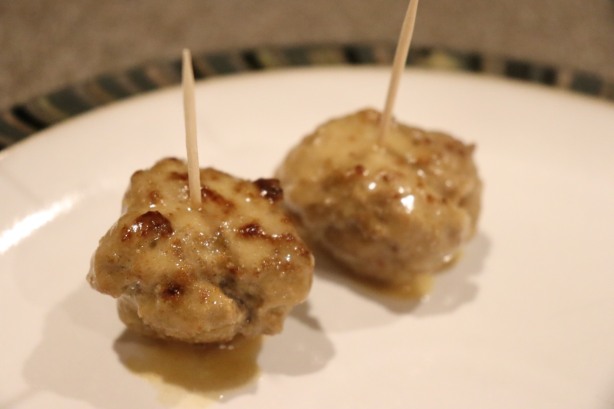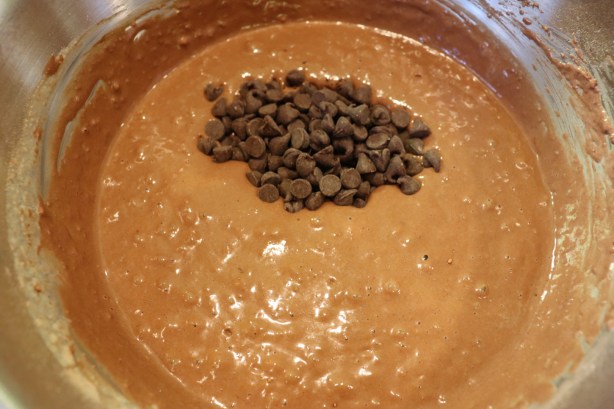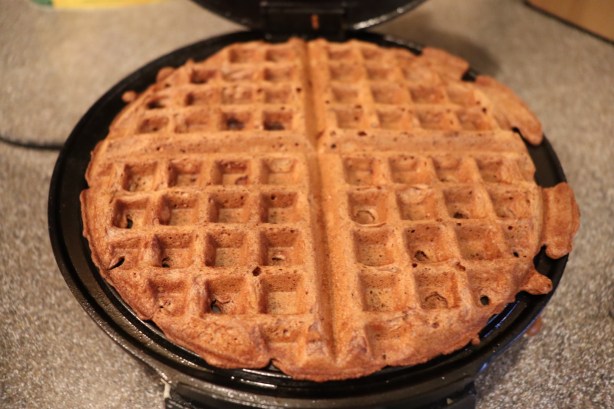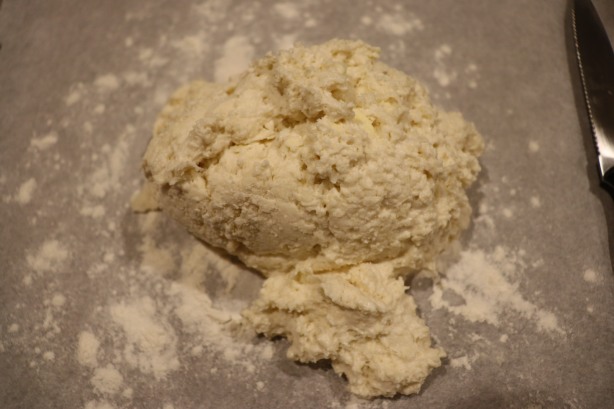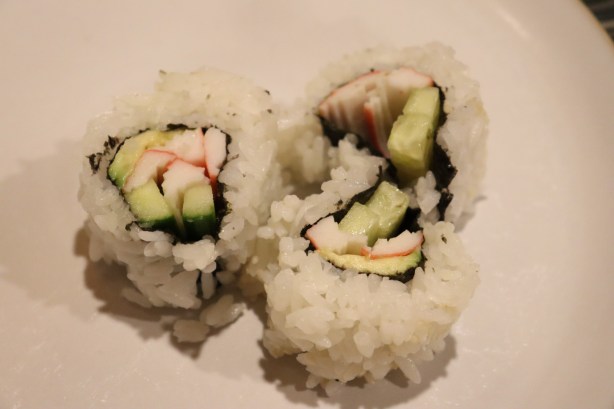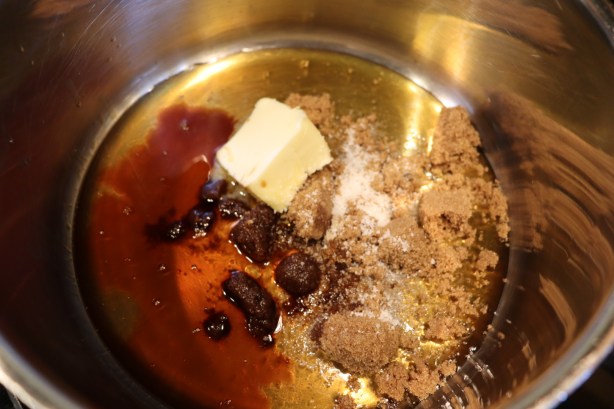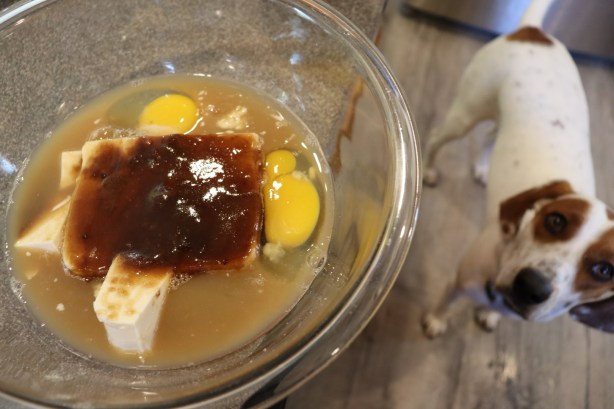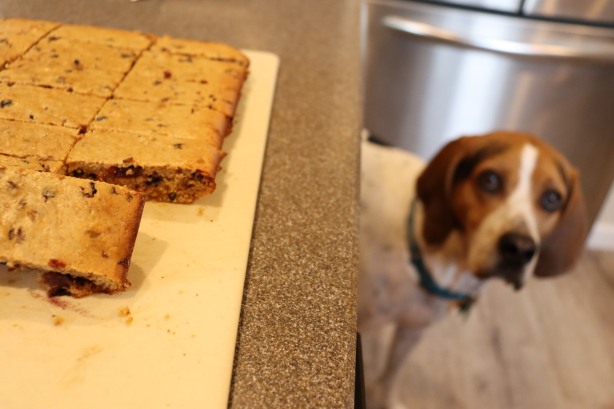Two days ago marked five years since Ted was diagnosed with cancer. It was also his birthday yesterday, so we certainly have some things to celebrate this week! Good eats will absolutely be on our plates the next few days, including the steak au poivre from episode 141 – stay tuned for that. Thank goodness we will be having nice weather too!
I just finished up the recipes from episode 140, which were three vanilla-centered recipes. I had to order some vanilla beans for these recipes; I didn’t get the most expensive ones, but they were fairly plump, moist, and aromatic, so I think they were sufficient. In case you wonder why vanilla beans are so expensive… Did you know that vanilla flowers can only be pollinated on one day every year? They also often have to be pollinated by hand. In addition to that, vanilla pods have to cure after they are harvested, which takes months.
Fruit Salad with Vanilla Dressing
To first showcase vanilla, and specifically vanilla extract, Alton whipped up a fruit salad with a vanilla dressing. To make the salad, place the following items in a large mixing bowl: 1 Granny Smith apple (peeled, cored, and diced), 1 C halved seedless red grapes, 1 pear (peeled, cored, and diced), 10-12 halved medium strawberries, 1 peeled/diced mango, 1 sliced banana, and 1/3 C toasted chopped walnuts. I toasted my walnuts in a small skillet until they were fragrant.
To make the dressing for the salad, whisk together in a small bowl: 1 t vanilla extract, 1 t lemon juice, 1 t honey, 1/4 t Kosher salt, 1/4 t pepper, 1/2 C plain yogurt, and 1/4 C mayonnaise.
Add the dressing to the fruit, and toss to coat. Season to taste with additional pepper.

Alton’s vanilla fruit salad.
When I made this fruit salad, I was reminded that I should make fruit salads more often. I liked the combination of flavors and textures that Alton chose, as some of the fruit added tartness and crunch while others were softer and sweeter. The nuts were a nice addition, and I don’t think I’ve ever included them in a fruit salad before. The dressing itself is only very mildly sweet, which is really all you need with all of the sugar from the fruit. The only thing I question with this recipe is whether it truly exhibited the power of vanilla extract. I appreciate that Alton included a vanilla recipe that only used extract, but this recipe was pretty faint in the vanilla department. I would argue that Alton should have perhaps demonstrated how to make homemade vanilla extract, as he could then have used the homemade extract to make a delicious vanilla poundcake. Or, he could have used the homemade extract to flavor a cocktail. Just my two cents.
Creme Brulee
Creme Brulee is Alton’s second vanilla-based recipe, and he uses a whole vanilla bean for this one. To start, use a sharp knife to split a vanilla bean open and use the back of the knife to scrape out the seeds. Bring a quart of heavy cream to a simmer, along with the scraped vanilla bean and its seeds.
Once simmering, remove the pan from the heat and let the vanilla steep in the cream for 15 minutes.

Cream after steeping.
While the cream is steeping, whisk 6 egg yolks in a large bowl until they have lightened in color and preheat your oven to 325 degrees. Slowly add 1/2 C sugar to the yolks; vanilla sugar is ideal, if you have it. You can make vanilla sugar by placing a vanilla bean in some sugar. In fact, you can make it at this point of this recipe by rinsing the steeped vanilla bean and placing it in some sugar for later use.
Next, slowly add the warm cream to the eggs, whisking in just a little bit at a time until it is all added.
Line a roasting pan with a tea towel and place six ramekins inside, dividing the custard among them. Alton filled his ramekins after placing his roasting pan in the oven, but I found it easier to fill the ramekins on my countertop.
Either way, once the filled ramekins are in the roasting pan inside the oven, add hot (not boiling) water to the roasting pan until it comes about half-way up the ramekins.

Custards in the oven and hot water added to come halfway up the ramekins.
Bake the custard for 40-45 minutes or until it is set, but still jiggly in the center. Okay, so I had enough custard to fill six ramekins plus a larger, shallower dish (see photo above). My shallow custard was very obviously done after about 30-35 minutes, as it had greater surface area.

Shallow custard after baking.
My ramekins were still very jiggly at 45 minutes, and my intuition told me to cook them longer. I ignored my intuition, however, as I could hear Alton stressing that you do not want to overcook the custard.
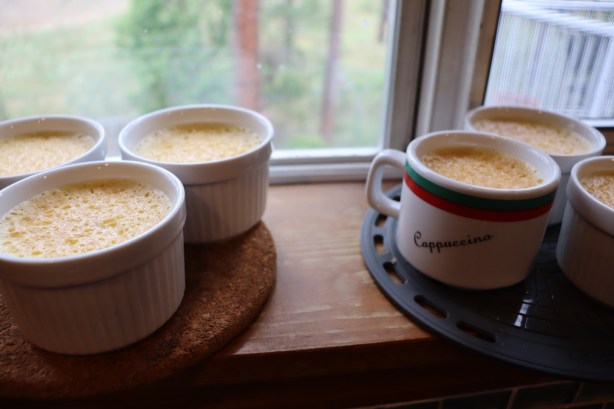
Ramekins after baking – still underdone in the middle.
Yeah, I should have listened to my intuition. My ramekins were still very wobbly in the center after cooling to room temperature. I decided to put them back in the oven again, and I ended up cooking them for at least 20 minutes the second time around. They were a little more golden on top than they should have been, but they ended up setting up just fine. Let the custards cool to room temperature and then refrigerate them until ready to serve.
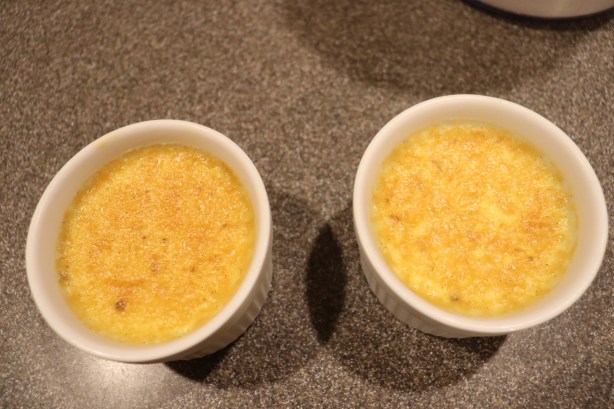
Custards after
To brulee the custard, sprinkle an even layer of sugar (again, vanilla sugar is best) over the top of the custard.

Sugar sprinkled over the custard surface.
Using a torch, heat the sugar until it begins to brown in places. Then, pick the ramekin up and rotate it as you hold the ramekin at a 45 degree angle, letting the molten sugar flow over the surface as you continue to brulee. My sister-in-law gave me a small butane torch years ago, so I used that. Alton prefers to use a high-powered torch from a hardware store.

Alton’s creme brulee.
This was a delicious dessert, even despite my initial under-baking. The custard was perfectly smooth and rich, and had a deep vanilla flavor. Alton’s brulee method of rotating on an angle worked perfectly, giving a perfect golden, sugary crust every time. This is a wonderful recipe – just be sure to cook the custards until they are just barely wobbly in the center. Oh, and if your ramekins are sized as mine are, you will likely have enough custard for at least eight desserts!
Vanilla Poached Pears
My mom got on a short kick years ago of making poached pears. I recall her making at least three or four types of poached pears over, what seemed to be, just a few short weeks. If I’m being honest, I remember hoping she would finally make something different for dessert! I don’t believe that I had ever made poached pears prior to this recipe of Alton’s that I prepared last week. This recipe starts with pouring a 750 ml bottle of riesling or viognier into a large saucepan.

A bottle of Riesling.
Add 1 C water, 5 oz sugar (vanilla sugar is best), and 1 vanilla bean that has been split/scraped.
Bring the wine mixture to a simmer over medium-high heat. While the liquid heats, peel and core (from the bottom) four pears, leaving the stems intact; Alton did not specify a certain type of pear in the episode. Oh, and to core his pears, Alton used a spade drill bit, so Ted picked one up for me. The drill bit worked really well!
Place the prepped pears in the almost-boiling liquid and cover the pan.

Pears added to simmering liquid.
Let the pears cook for 30 minutes or until they are knife tender. Remove the pears from the liquid and let them cool for 30 minutes at room temperature. Conversely, I see that the online recipe instructs you to cool the pears in the refrigerator.
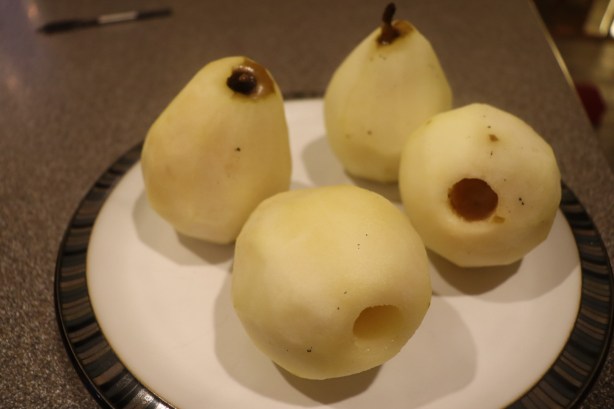
Pears after cooking for about 30 minutes.
While the pears cool, increase the heat under the cooking liquid and reduce the liquid until you have about one cup remaining, which should take 20-25 minutes. I found that it took a little longer than this for my liquid to adequately reduce to a syrup.
Once reduced, serve the pears with the warm syrup.

Alton’s poached pears.
Vanilla flavor and aroma were very evident in these pears, as the vanilla seemed to have actually permeated the pears themselves, and the syrup also had a lovely vanilla infusion. The syrup was sweet, but not cloyingly so, which I really appreciated. I should have cooked my pears a little longer than I did, so mine were a bit too firm, but that was my error. All in all, this recipe did a great job of showcasing vanilla and is a great way to utilize fruit in a dessert. This would also be an easy dessert to serve for a dinner party, as you could easily double the syrup and cook multiple pears in a large pot.





















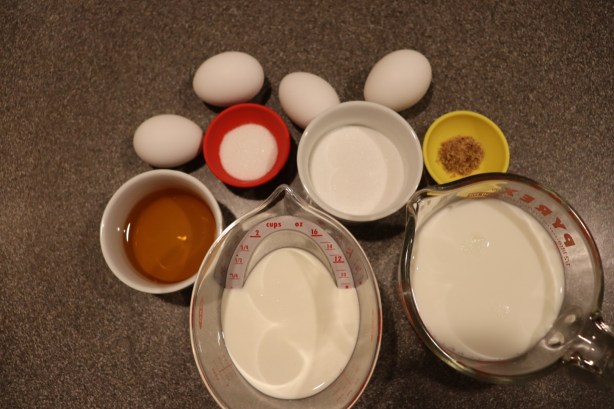

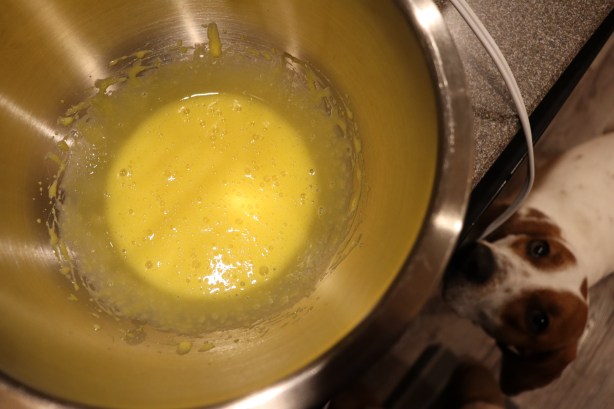








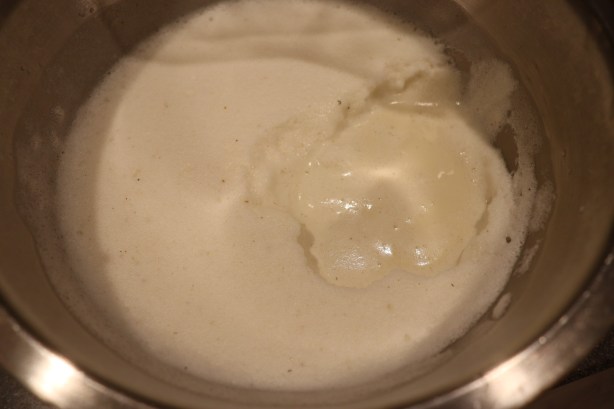










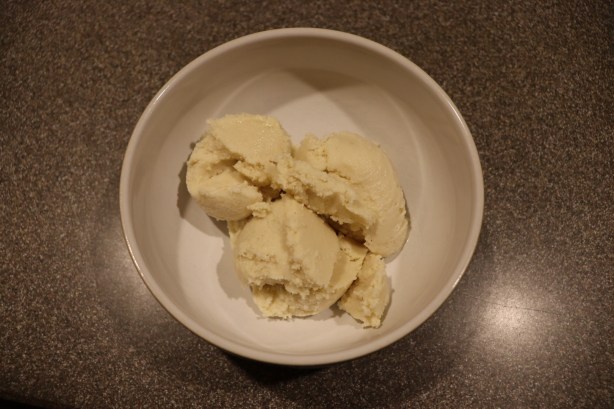






















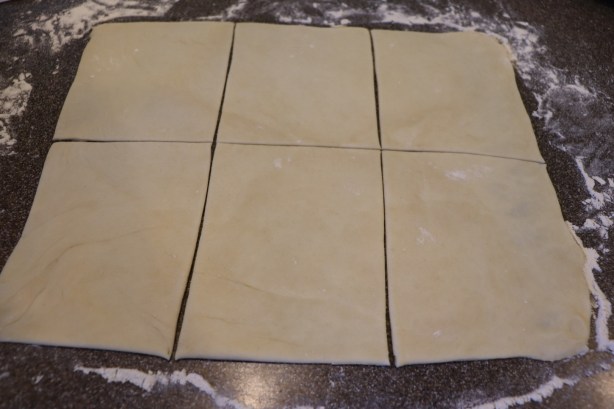



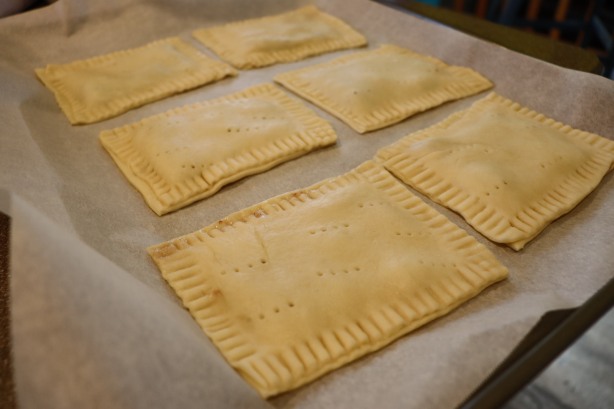
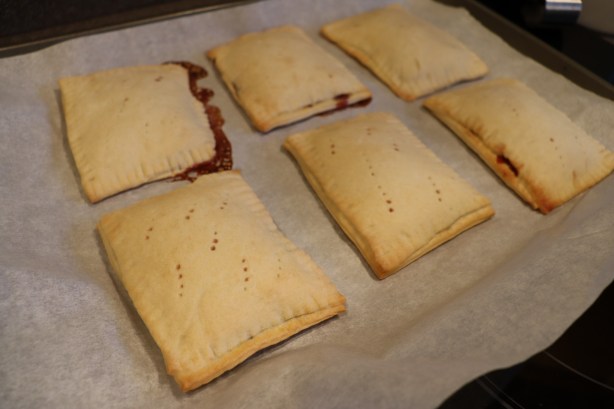


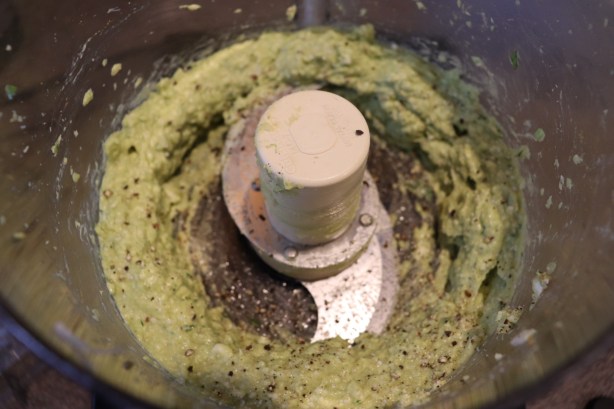



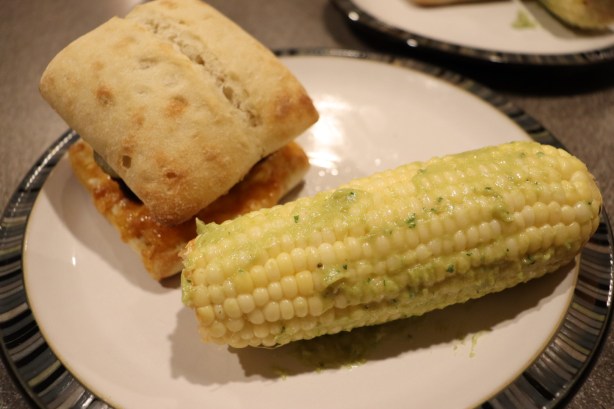







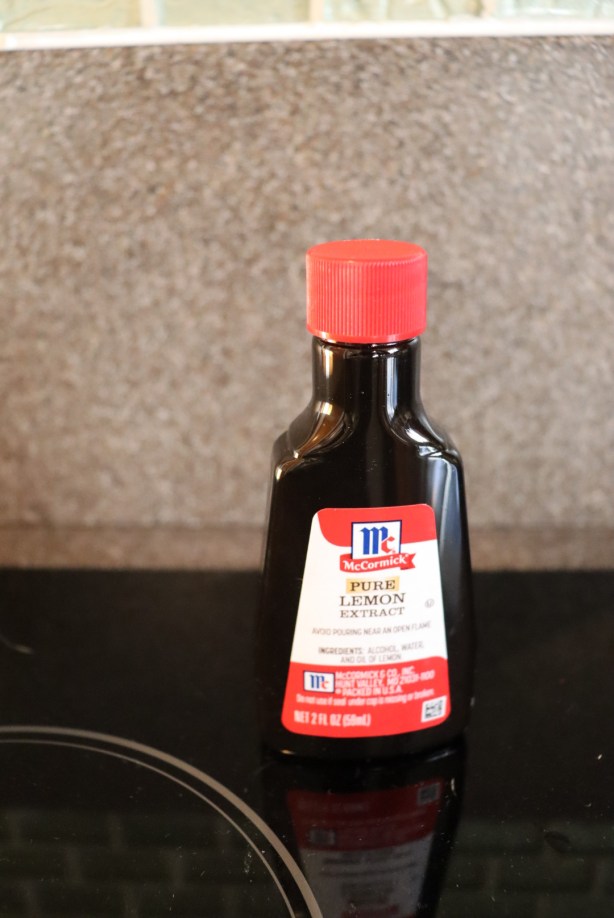






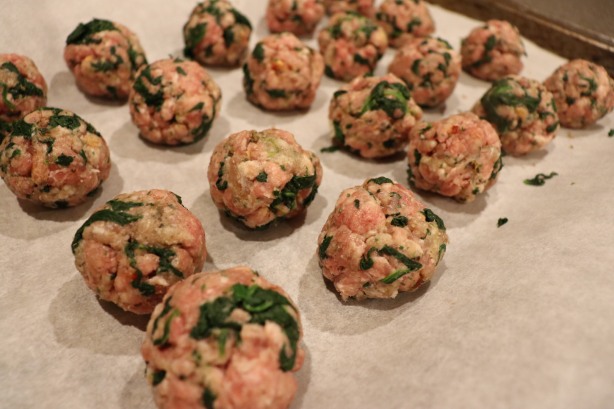






 Next, put 3/4 pound ground chuck in the bowl of a stand mixer, along with 3/4 pound ground pork, the milk-soaked bread from earlier, the onion, two egg yolks, 1 t Kosher salt, 1/2 t pepper, 1/4 t nutmeg, and 1/4 t allspice.
Next, put 3/4 pound ground chuck in the bowl of a stand mixer, along with 3/4 pound ground pork, the milk-soaked bread from earlier, the onion, two egg yolks, 1 t Kosher salt, 1/2 t pepper, 1/4 t nutmeg, and 1/4 t allspice.









